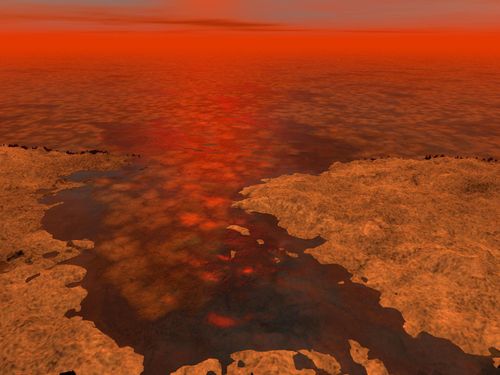Ice on Titan’s Lakes: "May Host an Exotic Form of Life" says NASA/JPL
Source: dailygalaxy.com

A new paper by scientists on NASA’s Cassini mission finds that blocks of hydrocarbon ice might decorate the surface of existing lakes and seas of liquid hydrocarbon on Saturn’s moon Titan. The presence of ice floes might explain some of the mixed readings Cassini has seen in the reflectivity of the surfaces of lakes on Titan.
"One of the most intriguing questions about these lakes and seas is whether they might host an exotic form of life," said Jonathan Lunine, a paper co-author and Cassini interdisciplinary Titan scientist at Cornell University, Ithaca, N.Y. "And the formation of floating hydrocarbon ice will provide an opportunity for interesting chemistry along the boundary between liquid and solid, a boundary that may have been important in the origin of terrestrial life."
Titan is the only other body besides Earth in our solar system with stable bodies of liquid on its surface. But while our planet’s cycle of precipitation and evaporation involves water, Titan’s cycle involves hydrocarbons like ethane and methane. Ethane and methane are organic molecules, which scientists think can be building blocks for the more complex chemistry from which life arose. Cassini has seen a vast network of these hydrocarbon seas cover Titan’s northern hemisphere, while a more sporadic set of lakes bejewels the southern hemisphere.
Scientists think the variations in reflectivity, or brightness, have to do with the smoothness or texture of the surface. If a lake is fully liquid, it looks dark, but if it is only partially liquid, it looks brighter.
[...]
Read the full article at: dailygalaxy.com






















